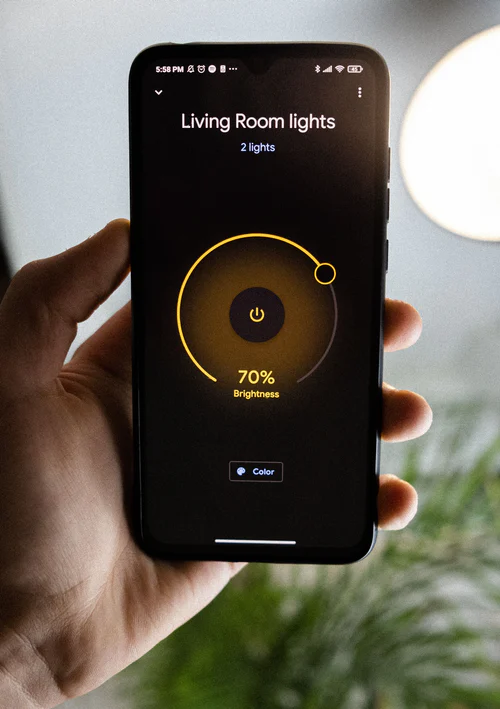In summers, setting the room temperature is simple. You match it to the outside environment unless you live in torrid zones where air coolers and conditioners are necessary. But during the winters turning the heat on and setting the thermostat is confusing and cumbersome too.
It is often difficult to decide between central heating and room-wise variations. Energy and monetary considerations differ from house to house. One has to either turn off the thermostat or keep it on while going away. Thus, you either decide to save the bills or end up finding the home at uncomfortable temperatures. These issues can be averted if you revamp the heating system and upgrade to a programmable thermostat. Below we discuss the advantages of thermostats that are smart and efficient.
Ease of Use
The modern thermostats are compatible with smart home devices like Amazon's Alexa. You can integrate the thermostat with the doorbell too. The ring thermostat is easy to install. The connecting app has clear instructions for installation. Rather than the multi-step touchscreen methods, the new generation thermostats come in a ring format. One can rotate it up and down to vary the temperature. One can set schedules, make adjustments, adjust brightness, sensor parameters. etc., with ease. The general procedure is to turn the ring to view different options and pressing it for selecting one. In most thermostats, it is also possible to lock your settings and personalize them. Moreover, the latest thermostats are compatible with voice command technology. Thus, you can sit in a place, continue to do your work, and say an instruction to make thermostat adjustments.
Remote Access
A smart thermostat is wifi-enabled, implying you can regulate it through a laptop or mobile from anywhere. Thus, it is possible to turn it on before you arrive home. Also, you can make adjustments if there is a delay or schedule change. Also, modern systems are AI-based. These can observe the usage pattern and adjust the temperature automatically without any command or manual changes.
For example, people prefer extra warmth in the morning and during dinner. So, they may adjust the temperature at these times. The latest thermometer can notice changes, save them as a reference, and adjust the temperature based on the user activity.
Energy Saving
You can turn on and off the thermostat as and when you require. Also, the latest ones have sensors that automatically go to the minimal mode when no person is in the room. Thus, it is the best way to reduce energy bills, unlike the traditional systems where the user has to set the temperature every time.
They also track the usage and give a report. And, based on that, it is possible to reduce consumption. The smart devices are more precise, and the measurements shown have a variance of about half a degree. It implies you pay only for what you consume.
Automatic Weather Tracking
The newest thermostats can monitor weather changes and adjust the room temperature accordingly. The latest thermostats can track the efficiency of the heating system and automatically adjust the temperature.
It is an effective solution to pair the programmable thermostat with the HVAC (heating, ventilation, and air conditioning) systems. Regression algorithms linking the thermostat data and the outside temperature are helpful in the optimal operation of HVAC systems in huge buildings.
Cost-effective
With programmable thermostats, one need not let the house heat up or cool down while you are away. One can always turn on the 'Away' mode. It saves both energy resources and electricity bills. Before reaching home, you adjust the temperature settings to a comfortable level. You get alerts when internal parts like air filters, indicator lights, display systems, etc., require servicing.
Thus, one can avoid major repair work and increase durability. Also, the latest thermostats have allied apps that monitor energy usage and recommend ways to reduce electricity bills. They take into account factors like the home's size, location, weather, and HVAC system. In a bid to conserve natural resources and save money, several apps provide rewards for consuming less.
Zoning Facilities
Maintaining the entire house at the same temperature is not economical and not necessary too. For example, people prefer their bedrooms to be warmer at night, and not many are likely to go to the living room or kitchen. Similarly, in the mornings, people spend more time in the kitchen. With smart thermostats, sensor-based zoning is possible. Initially, one might adjust the temperature on a need basis. But the latest thermostat system can learn from the usage pattern and sense the user needs.
Using sensor-based zoning is more affordable as compared to traditional ones. They involve the use of multiple heaters, coolers, and duct systems. Their installation and maintenance cost is higher when compared to the programmable thermostats.
Final Thoughts
The modern thermostats are AI-based and can learn from user choices. They adapt to the schedules and turn off automatically when no one is there for a stipulated time. Also, there is a choice for locking your preferences. One need not adjust the settings often and bother about the electricity charges. They are tuned to reduce costs.



